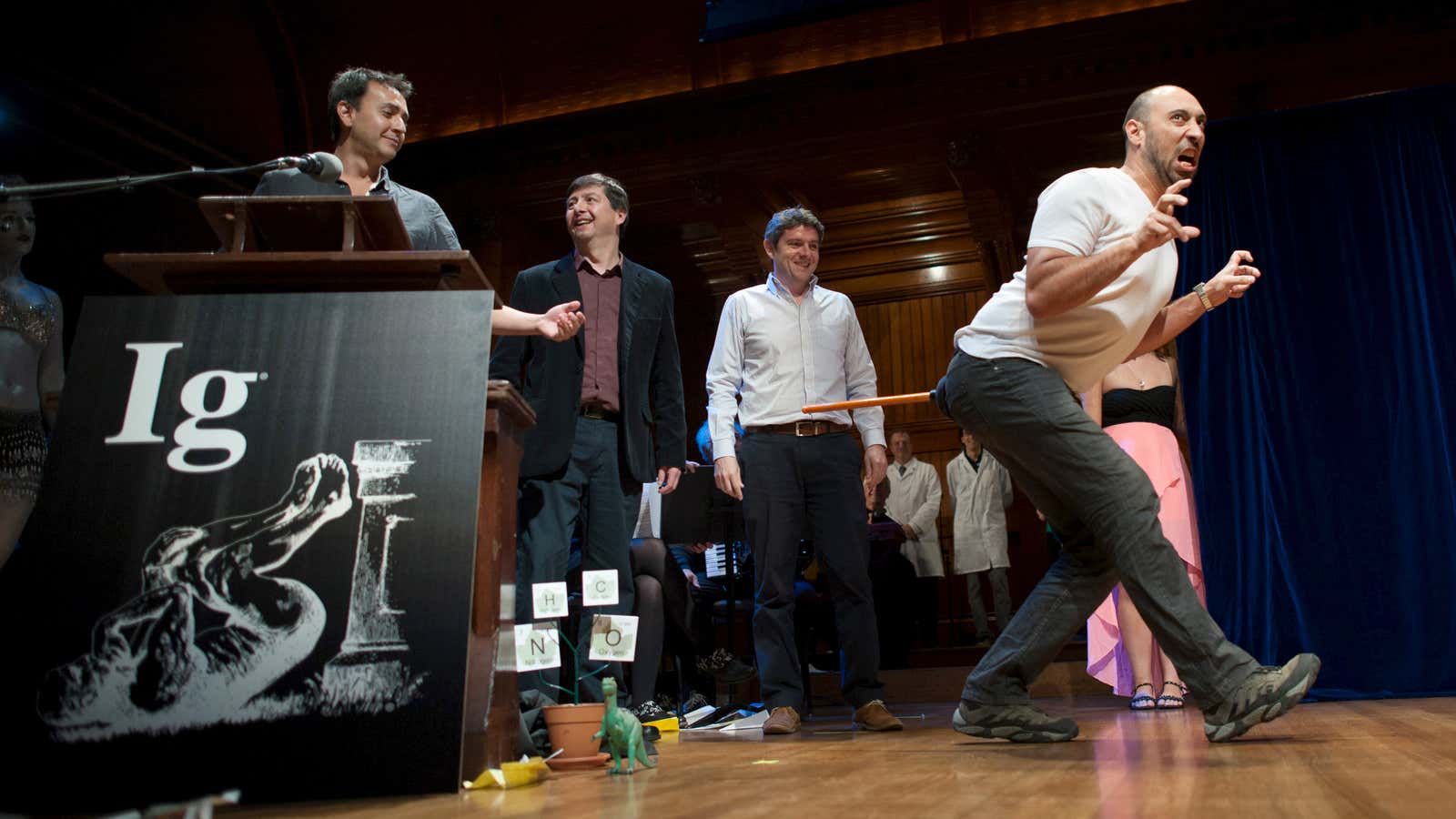This year’s Ig Nobel prize recipients, announced yesterday (Sept. 17), don’t sound like the most serious-minded scientists. The prizes—awarded to silly and improbable scientific research—were given to scientists who:
- Conducted a mathematical investigation into whether it was possible for Moulay Ismael the Bloodthirsty to father 888 children over the space of 30 years;
- Discovered that nearly all mammals empty their bladders in roughly 21 seconds;
- That the word “huh” exists in every human language (though we’re not sure why);
- And that a chicken with a weight attached to its rear walks like a dinosaur.
One dedicated researcher, Michael Smith, allowed honey bees to repeatedly sting his body on 25 different locations (including the nostril, the upper lip, and the shaft of his penis), to determine which are the most painful. (It was actually the nostril.)
But though the Ig Nobel is a parody of the Nobel prize, perhaps its recipients should be held in higher esteem. The award isn’t simply a booby prize, like the Bad Sex Awards or Darwin Awards. Sometimes, the scientific research honoured by Ig Nobel is a sign of true brilliance.
Andre Geim won an Ig Nobel for using magnets to levitate a frog in 2000—and he went on to win a Nobel prize 10 years later, albeit for a different project.
Geim has said that he values his Ig Nobel prize as much as his Nobel prize and there’s no doubt his creative approach towards science led to both relevant discoveries. Geim won a Nobel for his discovery of graphene, which he achieved by sticking Scotch tape to a graphite crystal and examining the residue that clung to the tape.
And though Ig Nobel-honored research sounds useless, many scientific discoveries seem impractical at first. Cambridge University professor JJ Thompson, who discovered the electron in 1898, often raised a toast: “To the electron –may it never be of any use to anybody.” And cosmic microwave background radiation, which is evidence of the Big Bang, was first discovered as nuisance noise that was interfering with two scientists’ radio telescope.
Several Ig Nobel discoveries have in fact gone on to have practical uses. One previous Ig Nobel prize-winning paper (pdf), on Malaria mosquitoes’ attraction to Limburger cheese, led to scientists carrying Limburger cheese to Africa in a bid to lure Malaria-ridden mosquitoes away from humans.
Another Ig Nobel paper, on the spontaneous knotting of an agitated string (pdf), which proves that string will inevitably tangle itself into knots, has been cited in research on “the why and how of DNA unlinking”.
Smith’s painful bee stings may not lead to major practical benefits, but we should honor his (Ig?) noble pursuit of the truth. After all, researchers who follow the respectable path rarely make world-changing discoveries.
When it comes to science, it helps to be a little bit mad.
